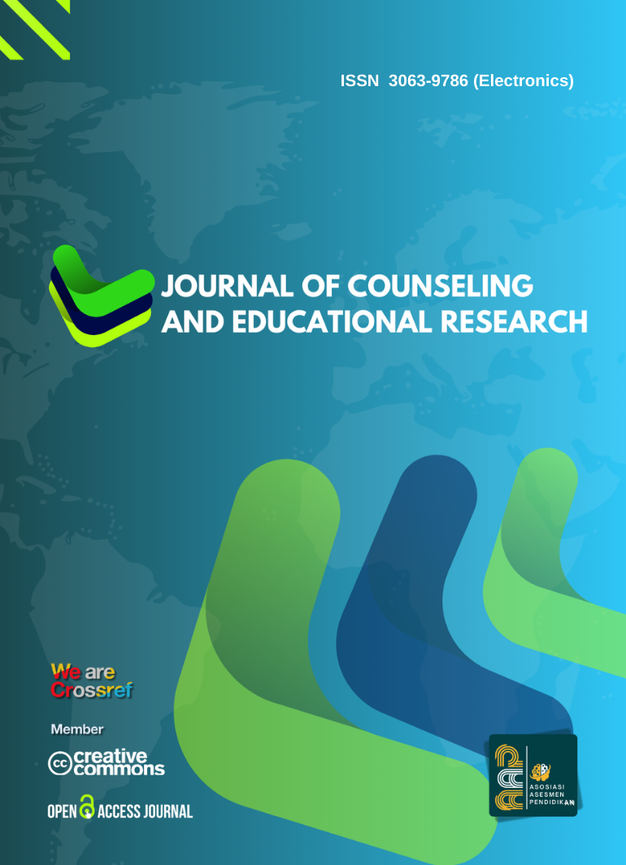The Behavior of Adolescent Online Game Players: An Analysis of the Impact of Peer Interaction
-
Published: August 25, 2024
-
Page: 33-43
Abstract
The study aims to determine how much influence peer interaction has on the behavior of adolescents who like to play garena free fire online games using associative quantitative research methods with data collection methods using google form. The research location was Bekasi city and took place from February 2024 - June 2024. Respondents in this study amounted to 150 teenagers with criteria for adolescents aged 15-18 years, domiciled in Bekasi City, playing GFF online games. The sampling technique used purposive sampling. This study used the Peer Relationship Scale for Adolescent: a validity and reliability study Aydogdu (2022) instrument for peer interaction and Motives for online gaming questionnaire (MOGQ) Demetrovics et al. (2011) for adolescent behavior. The data analysis technique used is a significant regression test of Fhitung > Ftabel = 17.460 > 3.934, meaning that there is a significant influence between peer interaction on the behavior of adolescents who like to play garena free fire online games. Furthermore, the result of the coefficient of determination (R2) is 0.106 or equal to 10.6%, so it can be concluded that the contribution of peer interaction to the behavior of adolescents who like to play online games garena free fire is 10.6%. Peer interaction has an influence on the behavior of teenagers who like to play garena free fire online games. Teenagers who have high peer interactions will also have high adolescent behavior in playing garena free fire online games.
- Online Games
- Peer Interaction
- Adolescent
- Adams, E & Rollings, A. (2007). Game Design and Development. New Reader Publishing.
- Aydogdu, F. (2022). Developing a Peer Relationship Scale for Adolescents: a Validity and Reliability Study. Current Issues in Personality Psychology, 10 (2), 164–176.
- Chaplin, C. S. (1999). Kamus Lengkap Psikologi. Raja Grafindo Persada.
- CNBC, I. (2020). Berapa Jumlah Pemain Aktif Free Fire? Jawabannya Bikin Kaget!
- Demetrovics, Z., Urban, R., Nagygyorgy, K., Farkas, J., Zilahy, D., Mervo, B., Reindl, A., Agoston, C., Kertesz, A., & Harmath, E. (2011). Motives for Online Gaming Questionnaire (MOGQ). Behavior Research Methods, 43(3), 814–825. https://doi.org/10.3758/s13428-011-0091-y
- Erofonia, A. S., Santoso, G., & Nomi, S. (2021). Studi Penggunaan Game Online Free Fire pada Emosi Siswa Kelas 5 Di SDN 2 Braja Harjosari. Jurnal PGSD STKIP PGRI Banjarmasin, 3(1), 1–13. https://doi.org/10.33654/pgsd
- Eryzal Novrialdy. (2019). Kecanduan Game Online pada Remaja. 148–158.
- Haqiqi, A. N., & Muhith, A. (2020). Efek Negatif Bermain Game Online “ Free Fire Battlegrounds ” terhadap Akhlak Remaja. Solidarity: Jurnal of Social Studiestudies, 1(1).
- Hurlock, E. B. (1992). Psikologi Perkembangan: Suatu Pendekatan Sepanjang Rentang Kehidupan.
- Juniman, P. T. (2018). Alasan WHO Tetapkan Kecanduan Video Game Gangguan Kesehatan. CNN Indonesia.
- Margono. (2004). Metodologi Penelitian Pendidikan. Rineka Cipta.
- Monks, F. J. (2006). Psikologi Perkembangan. Gajah Mada.
- Nurhalimah, S. (2022). Siapa Pembuat Free Fire? Ini Jawaban dan Sejarah Pembuatannya. Samuderanesia.Id.
- Oktaviani, M., Maryam, R., & Agustine, D. (2020). Buku Saku Pelatihan Analisis Data Penelitian Kuantitatif. KARIMA (Karya Ilmu Media Aulia).
- Pratiwi, A. P., Nurlaili, & Syarifin, A. (2020). Hubungan Teman Sebaya terhadap Perilaku Sosial (Studi Kasus Anak Usia 5-8 tahun di Desa Giri Kecana RT 03 RW 04 Kecamatan Ketahun). Journal of Early Childhood Islamic Education, 3(2), 105–118.
- Przybylski, A. K. (2014). Electronic Gaming and Psychosocial Adjustment. Pediactrics.
- Santrock, J. W., Benedictine, W., & Novietha, S. (2012). Perkembangan Masa Hidup (Edisi ke-1). Erlangga.
- Saputra, R. (2021). Interaksi Sosial Pada Remaja Kecanduan Game Online di Desa Singosaren. Jurnal IAIN Ponorogo, Vol 2. No.
- Sari, V. Y. (2018). Pengaruh Hubungan Teman Sebaya terhadap Motivasi Sosial Siswa Kelas XI IIS Di SMAN 2 Pontianak. Jurnal Pendidikan Dan Pembelajaran Khatulistiwa, 1–10.
- Sarwono, S. W. (1993). Teori-Teori Psikologi Sosial. Rajawali.
- Slameto. (2013). Belajar dan Faktor-faktor yang Mempengaruhinya. Rineka Cipta.
- Soekanto, S. (2019). Sosiologi Suatu Pengantar (Edisi Revi). Rajawali Pers.
- Sugiyono. (2014). Metode Penelitian Pendidikan Pendekatan Kuantitatif, Kualitatif, dan R&D. Alfabeta.
- Sugiyono. (2017). Metode Penelitian Bisnis: Pendekatan Kuantitatif, Kualitatif, Kombinasi, dan R&D. CV. Alfabeta.
- Sujarweni, W. (2014). Metodologi Penelitian. Pustaka Baru Press.
- Surbakti, K. (2017). Pengaruh Game Online Terhadap Remaja. Jurnal Curere, 1(1), 29. http://www.portaluniversitasquality.ac.id:5388/ojssystem/index.php/CURERE/article/view/20/22
- Syahputra, T. R., & Amsal, A. (2018). Pengaruh Bermain Game Online terhadap Perilaku Komunikasi Remaja. Jurnal Ilmiah Mahasiswa FISIP Unsyiah, 3(1), 24. http://jim.unsyiah.ac.id/Fisip/article/view/6022/2713
- Syahrum, & Salim. (2014). Metodologi Penelitian Kuantitatif (R. Ananda). Citapustaka Media.
- Taniredja, T., & Mustafidah, H. (2014). Penelitian Kuantitatif (Sebuah Pengantar). Alfabeta.
- Vembriarto, S. (2017). Pathologi Sosial. Paramita.
- Weinstein, A. M. (2010). Computer and video game addiction-A comparison between game users and non-game users. American Journal of Drug and Alcohol Abuse, 36(5), 268–276. https://doi.org/10.3109/00952990.2010.491879
- Widyastuti, P. R. (2009). Kesehatan Reproduksi. Fitrimaya.












